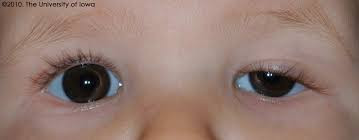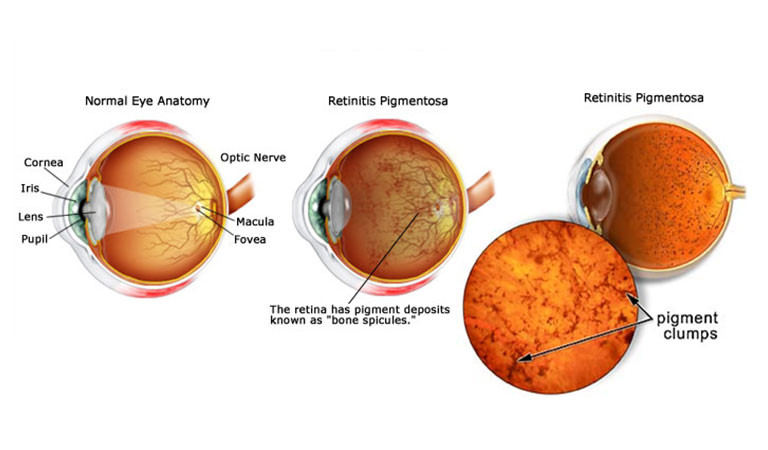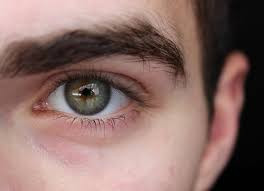Definisi
Mikroftalmus atau mikroftalmia merupakan cacat mata bawaan. Pada kondisi ini, satu atau kedua bola mata tidak berkembang dengan sempurna sehingga berukuran lebih kecil. Pada beberapa pasien, bola mata tampak benar-benar hilang. Namun, jaringan mata lainnya umumnya masih ada. Mikroftalmus dapat menyebabkan gangguan penglihatan atau bahkan kebutaan.
Mikroftalmus dapat berdiri sendiri, bersamaan dengan kelainan bawaan lainnya, atau menjadi bagian dari sindrom (kumpulan gejala). Jika mikroftalmus tidak disertai kelainan lainnya, maka termasuk mikroftalmus non-sindromik atau terisolasi.
Mikroftalmus terjadi pada sekitar 1 dari 10.000 orang. Sekitar 30-50% kasus merupakan bagian dari sindrom yang juga mengenai organ lain di dalam tubuh. Di Amerika Serikat, sekitar 1 dari 5.200 bayi baru lahir menderita mikroftalmus.
Penyebab
Penyebab mikroftalmus diduga berhubungan dengan mutasi gen yang mempengaruhi perkembangan awal organ mata. Sebagian besar kelainan gen tersebut belum diketahui secara pasti. Kondisi ini juga dapat terjadi akibat kelainan kromosom yang mempengaruhi gen. Mutasi gen dan kelainan kromosom terjadi saat hamil.
Mikroftalmus terisolasi kadang-kadang diwariskan dalam pola resesif autosomal, yaitu masing-masing orang tua membawa satu salinan gen yang bermutasi, tetapi mereka biasanya tidak menunjukkan tanda dan gejala dari kondisi tersebut. Namun, seringkali mikroftalmus tidak diwariskan, dan hanya ada satu individu yang terkena dalam keluarga.
Faktor Risiko
Selain mutasi gen, mikroftalmus juga berhubungan dengan beberapa faktor lingkungan yang mempengaruhi perkembangan awal janin, seperti kekurangan vitamin tertentu selama kehamilan, radiasi, penyakit infeksi seperti Rubella, atau paparan zat yang menyebabkan cacat lahir (bersifat teratogen), baik dari makanan, obat-obatan, baham kimia, maupun pestisida.
Beberapa obat yang dikonsumsi ibu saat hamil juga dapat menjadi penyebab kelainan genetik, antara lain Thalidomide (obat kanker dan beberapa kelainan kulit) serta obat jerawat golongan Retinoid (turunan vitamin A), misalnya Isotretinoin. Oleh karena itu, pada saat hamil, sebaiknya Ibu menghindari obat-obatan jenis tersebut.
Gejala
Mikroftalmus dapat menyebabkan gangguan penglihatan maupun kebutaan. Orang dengan mikroftalmus memiliki rongga mata yang lebih kecil, sehingga memengaruhi bentuk wajahnya.
Orang dengan mikroftalmus dapat memiliki kelainan mata lainnya. Salah satunya adalah koloboma, yaitu tidak terbentuk sebagian jaringan pada struktur pembentuk mata. Koloboma dapat terjadi pada lapisan pigmen mata atau iris; pada retina, yaitu jaringan peka cahaya di bagian belakang mata; pada lapisan pembuluh darah di bawah retina atau koroid; atau di saraf optik yang membawa informasi dari mata ke otak. Koloboma bisa mengenai salah satu atau kedua mata dan dapat mempengaruhi penglihatan tergantung ukuran dan lokasinya.
Orang dengan mikroftalmus juga dapat mengalami kekeruhan lensa mata (katarak), bukaan kelopak mata sempit, serta memiliki lapisan kornea yang kecil dengan kelengkungan yang tidak normal (mikrokornea).
Diagnosis
Mikroftalmus dapat didiagnosis sejak hamil ataupun setelah lahir. Saat hamil, dokter dapat mendiagnosis mikroftalmus melalui pemeriksaan USG, CT Scan, atau pemeriksaan gen. Setelah lahir, dokter mengidentifikasi mikroftalmus melalui pemeriksaan fisik langsung pada bayi. Dokter juga akan memastikan apakah ada kelainan bawaan lain yang menyertai.
Tata Laksana
Belum ada pengobatan yang dapat membuat mata baru atau mengembalikan keseluruhan penglihatan pada pasien mikroftalmus. Bayi baru lahir dengan mikroftalmus harus ditangani oleh dokter spesialis mata. Penanganan sedini mungkin sangat bermanfaat untuk pertumbuhan dan perkembangannya.
Beberapa perawatan yang dapat diberikan pada bayi mikroftalmus antara lain:
- Conformer
Rongga mata sangat penting bagi pertumbuhan dan perkembangan wajah bayi. Jika bayi mengalami mikroftalmus, tulang yang membentuk rongga mata dapat tumbuh tidak sempurna. Pada mata bayi, dapat dipasangkan alat berbahan plastik yang disebut conformer untuk membantu tulang sekitar rongga mata tumbuh dengan baik. Setelah bayi bertambah besar, conformer akan diperlebar mengikuti ukuran rongga matanya. Pada anak yang sudah lebih besar, dapat dipasangkan mata palsu.
- Kacamata pelindung
Bayi yang lahir dengan penglihatan hanya dari satu mata memerlukan kacamata khusus untuk melindungi mata dari cedera. Dokter anak dapat merekomendasikan jenis pelindung mata yang sesuai.
- Penutup mata
Anak dengan mikroftalmus mungkin masih bisa melihat dengan mata yang kecil. Dengan memasangkan penutup pada mata satunya, dapat memperkuat penglihatan pada mata yang lebih kecil melalui pembiasan menggunakan mata tersebut.
- Operasi
Anak dengan mikroftalmus mungkin memerlukan operasi untuk memperbesar rongga matanya, mengatur agar alat bantu terpasang dengan baik pada rongga mata, atau mengatasi masalah mata lainnya yang menyertai seperti katarak atau ablasi retina (retina terlepas dari penempelannya).
Dokter mata akan rutin memeriksa perkembangan pasien mikroftalmus sejak dini. Jika mikroftalmus hanya mengenai satu mata, dokter mata akan memberi saran mengenai cara menjaga dan mempertahankan penglihatan pada mata yang sehat.
Komplikasi
Komplikasi dari mikroftalmus jika tidak ditangani dengan segera antara lain:
- Gangguan penglihatan
- Kebutaan
Pencegahan
Pencegahan sudah dapat dilakukan sejak ibu sedang hamil atau berencana hamil. Konsultasikan dengan dokter bagaimana cara mencegah mikroftalmus pada bayi Anda. Beberapa hal yang dapat Anda lakukan adalah:
- Melakukan pemeriksaan kesehatan pra-kehamilan
- Konsultasi dengan dokter mengenai obat-obatan yang aman dikonsumsi saat hamil
- Berkonsultasi dengan ahli genetika
- Menghindari faktor risiko lingkungan yang berbahaya bagi bayi
Kapan Harus ke Dokter?
Anda perlu berkonsultasi dengan dokter jika mendapati bayi Anda yang baru lahir memiliki salah satu atau kedua mata berukuran lebih kecil dari mata normal. Namun, yang terbaik adalah Anda sudah perlu berkonsultasi dengan dokter sejak masa pra-kehamilan untuk mempersiapkan kehamilan dan bayi yang sehat.
Mau tahu informasi seputar penyakit lainnya? Cek di sini, ya!
- dr Ayu Munawaroh, MKK
Facts about Anophthalmia / Microphthalmia | CDC. Centers for Disease Control and Prevention. (2021). Retrieved 14 November 2021, from https://www.cdc.gov/ncbddd/birthdefects/anophthalmia-microphthalmia.html.
Microphthalmia: MedlinePlus Genetics. Medlineplus.gov. (2021). Retrieved 10 November 2021, from https://medlineplus.gov/genetics/condition/microphthalmia/.
Anophthalmia and Microphthalmia | National Eye Institute. Nei.nih.gov. (2021). Retrieved 14 November 2021, from https://www.nei.nih.gov/learn-about-eye-health/eye-conditions-and-diseases/anophthalmia-and-microphthalmia.












